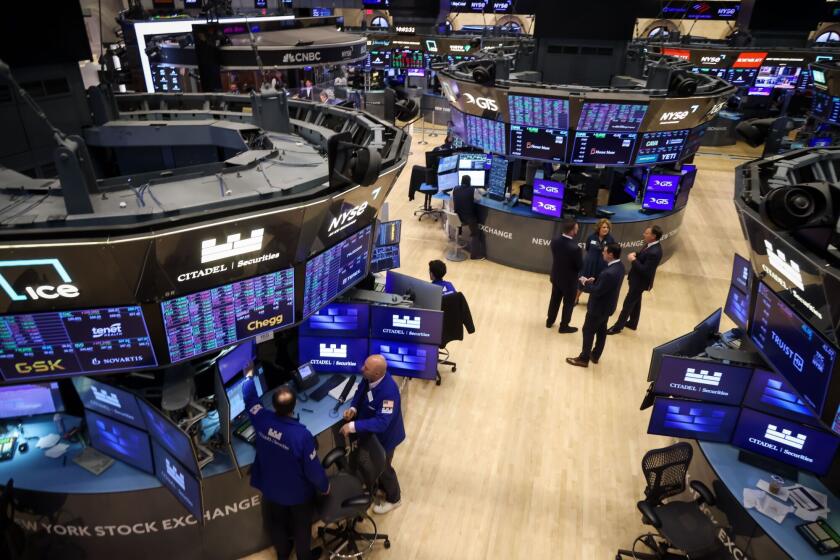Promotional Spending Soars for Cigarettes
- Share via
When cigarette makers agreed to limit advertising as part of their settlement with the states, they were expected to slash promotional expenditures for their brands. But tobacco companies are spending more than ever to pitch their brands, including a record $9.57billion in 2000, when they managed to stem a historic slide in cigarette consumption, according to a Federal Trade Commission report Friday.
Promotional spending by the six top manufacturers rose 16% from the 1999 total of $8.24 billion. That too had represented a huge increase over expenditures before 1998, when tobacco companies settled lawsuits filed by state attorneys general.
With cigarettes sales in 2000 of just over 20 billion cigarette packs, promotional spending came to nearly 50 cents a pack.
“The increase is just unbelievable,” said Matthew L. Myers, president of the Campaign for Tobacco-Free Kids, a Washington-based anti-smoking group. “What you’re seeing here is a very concerted effort to offset the impact of the marketing restrictions, [cigarette] price increases and anti-smoking programs.”
Cigarette consumption has fallen in nearly each of the last 20 years, but the promotional blitz may have interrupted the decline at least temporarily.
In its marketing report, the FTC said consumption rose by about one-half of 1% to 413.5 billion cigarettes in 2000. But the agency, which annually reports on cigarette sales and advertising, also cited U.S. Department of Agriculture estimates showing a 1.1% decline in cigarettes smoked.
Due to rising population, per capita sales fell about 9%, the FTC said.
The industry’s rising promotional expenditures reflect a trend away from traditional advertising to point-of-purchase displays in stores and giveaways to smokers.
Cigarette ads have been banned from the airwaves for 30 years. In their $246-billion settlement with the states, the tobacco companies accepted a ban on billboard and transit advertising, and restrictions on sports promotions and giveaways of branded merchandise such as caps and T-shirts.
According to the FTC report, the biggest spending category since 1994 has been retail promotional allowances--payments to merchants to install displays and signs and provide shelf space. Cigarette makers made $3.91 billion in such payments in 2000, an increase of 10.5% over the 1999 total of $3.54 billion.
In the single biggest increase, the companies spent $3.52 billion on so-called value-added promotions, such as a “buy one, get one free,” or a free bonus item, such as a lighter, with each two packs sold. This was a $956.6-million increase, or 37.4%, over 1999, when value-added promotions cost $2.56 billion. Part of the increase reflected the higher retail cost for each pack of cigarettes offered for free.
Magazine advertising fell about 22% to $294.9 million, while newspaper ad expenditures rose to $51.7 million from $51 million, according to the report, which did not break out costs for individual companies. Philip Morris U.S.A., the leading U.S. cigarette maker, said its expenditures increased mainly because of incentives paid to retailers. The company said its merchandising agreements offer special incentives to retailers that place cigarettes behind counters and take other steps to limit access by underage smokers.
The company also said it has exceeded the requirements of the state settlement in other ways, including ceasing advertising on the back covers of magazines.
More to Read
Inside the business of entertainment
The Wide Shot brings you news, analysis and insights on everything from streaming wars to production — and what it all means for the future.
You may occasionally receive promotional content from the Los Angeles Times.








